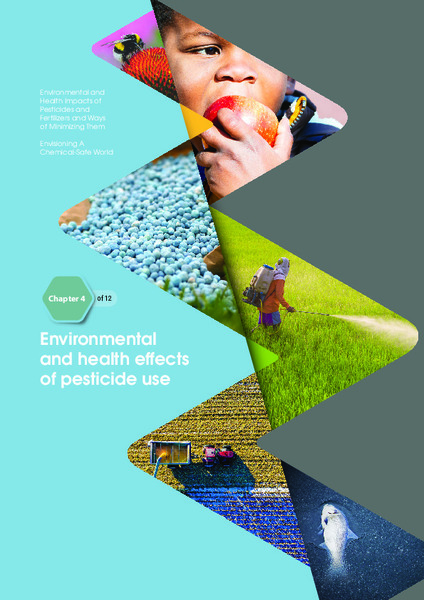Browsing Reports, Books and Booklets by Subject "HEALTH HAZARDS"
Now showing items 1-20 of 52
-
1, 3-Dichloropropene, 1, 2-Diciiloropropane and Mixtures Health and Safety Guide 76
(1992)Commercial 1,3-dichioropropene is a mixture of cis- and trans- isomers and 92% pure. It may also be used in admixtures with 1 ,2-dibromoethane (Dorloe) or with 1 ,2dichloropropane (D-D , soil fumigant; Nemex Telone , and ... -
1,2-Dichloroethane Health and Safety Guide - Health and Safety Guide 55
(1991)1,2-Dichioroethane is a colourless liquid, with a sweet taste aid a chloroform-like odour. Reportd odour thresholds are 25-450 mg/ni for perception and 162-750 mg/rn for recognition. 1,2-Dichiorethane is a volatile and ... -
Acrylic Acid Health and Safety Guide - Health and Safety Guide 104
(1997)Acrylic acid is a colourless liquid with an irritating acrid odour at room temperature and pressure. Its odour threshold is low (0.20-3.14 mg/rn3). It is miscible in water and most organic solvents. -
Aldicarb Health and Safety Guide - Health and Safety Guide 64
(1991)Aldicarb has a slight sulfur smell. It has a melting point of 100 °C and a specific gravity of 1.195 at 25 °C. it is soluble in water, sensitive to heat, and relatively unstable. Analytical methods for aldicarb include ... -
Amitrole Health And Safety Guide - Health And Safety Guide 85
(1994)Amitrole is readily soluble in water, methanol, ethanol, and chloroform, sparingly soluble in ethyl acetate, and insoluble in hydrocarbons, acetone, and ether. It forms salts with most acids and bases, and is a powerful ... -
Ammonia Health and Safety Guide - Health and Safety Guide 37
(1990)Ammonia is a colourless acrid-smelling gas at room temperature and normal atmospheric pressure. Most people can identify its odour at 35 mg/rn3 in air. It can be stored and transported as a liquid at a pressure of 10 ... -
Barium - Health and Safety Guide 46
(1991)Barium is an alkaline earth metal that occurs in nature in a combined form. It is present in rocks, minerals, soils, air, natural waters, and fossil fuels. Some barium salts (e.g., acetate, nitrate, and chloride) are quite ... -
Basic Environmental Health
(2001)This comprehensive interdisciplinary text draws from the social sciences, the natural sciences and the health sciences to introduce students to the principles and methods of environmental health. It offers an overview of ... -
Biomarkers in Risk Assessment: Validity and Vlidation - Environmental Health Criteria 222
(2001)The aim of risk assessments is to provide society with estimates of the likelihood of illnesses and injury as a consequence of exposure to various hazards. Risk assessments are needed when social policy decisions are in ... -
Brodifacoum Health and Safety Guide - Health and Safety Guide 93
(1995)Brodifacoum is an off-white powder, which is stable in the solid form. Its solubility in water is very low (less than 10 mg/litre at 20 °C and pH 7); it is slightly soluble in benzene and soluble in acetone. -
Bromadiolone Health And Safety Guide - Health And Safety Guide 94
(1995)Bromadiolone is a white to off-white powder. Its solubility in water is very low (less than 20 mg/litre at 20 °C). It is slightly soluble in ethanol and ethyl acetate, and soluble in dimethylformamide. The flash-point ... -
Captafol Health and Safety Guide - Health and Safety Guide 49
(1990)Technical captafol is a light tan powder with a characteristic odour. It is stable at room temperature in the dry state, but is readily bydrolysed, especially in an alkaline environment. The melting point of the pure ... -
Carbon Tetrachloride Health and Safety Guide - Health and Safety Guide 108
(1998)Carbon tetrachioride is a volatile, colourless, clear, heavy liquid with a characteristic sweet, non-irritant odour. The odour threshold in water is 0.52 mg/litre, and in air it is >64.1 mg/m3 (10 ppm). Carbon tetrachioride ... -
Chapter 4/12: Environmental and Health Effects of Pesticide Use
This chapter on “environmental and health effects of pesticide use” is the 4th in a series of 12 chapters that make up a comprehensive compilation of scientific information. The chapters were developed to both inform and ... -
Cypermethrin Health and Safety Guide - Health and Safety Guide No. 22
(1989)This is a companion volume to Environmental Health Criteria 82: Cypermethrin. The Environmental Health Criteria (EHC) documents produced by the International Programme on Chemical Safety include an assessment of the effects ... -
Dichlorvos Health and Safety Guide - Health and Safety Guide No. 18
(1988)Technical dichlorvos is a colourless to amber liquid with a mild chemical odour. It is hydrolysed by water at a rate of 3% per day at room temperature. It is corrosive to iron and mild steel.The purpose of a Health and ... -
Diflubenzuron Health and Safety Guide 99
(1995)Diflubenzuron is an odourless, white, crystalline solid. It is almost insoluble in water and poorly soluble in apolar organic solvents. In polar to very polar solvents, the solubility is moderate to good, e.g., in acetone ... -
Dimethyl Phthalate - Scientific Reviews of Soviet Literature on Toxicity and Hazards of Chemicals 24
(Centre of International Projects, GKNT, 1982)Information carried by the review is in line with the data profile structure elaborated by the International Register of Potentially Toxic Chemicals. The series is intended for toxicologists, higienists and all those ... -
Dimethylformamide (Dmf) - Health and Safety Guide 43
(1990)Dimethylformamide (DMF) is a colourless liquid with only a slight, unpleasant odour; smell is, therefore, not a useful warning signal. DMF is usually stable but, when it comes into contact with strong oxidizers, halogens, ... -
Electromagnetic Fields (300 Hz to 300 GHz) - Environmental Health Criteria 137
(1993)This monograph is concerned with the health effects of electromagnetic fields in the frequency range of 300 Hz-300 GHz, which includes the radiofrequency (RF) range (100 kHz-300 GHz) covered in the earlier publication (WHO, ...





















